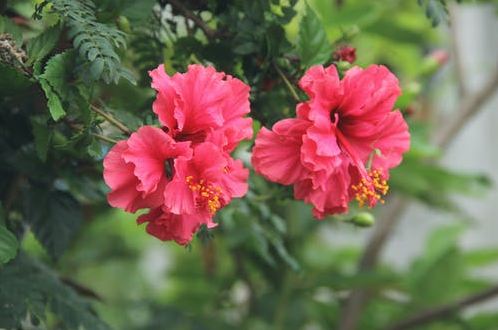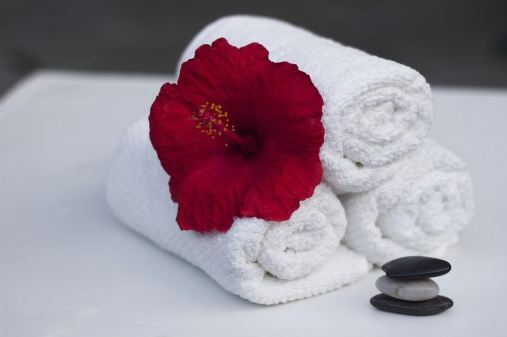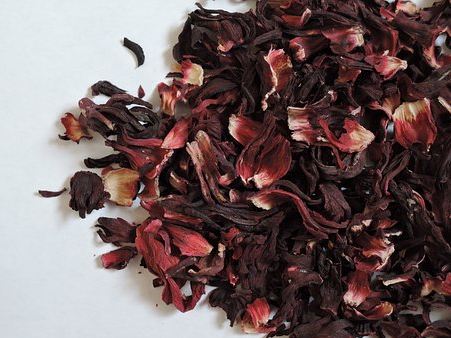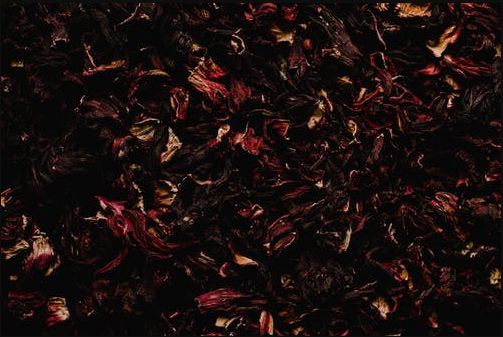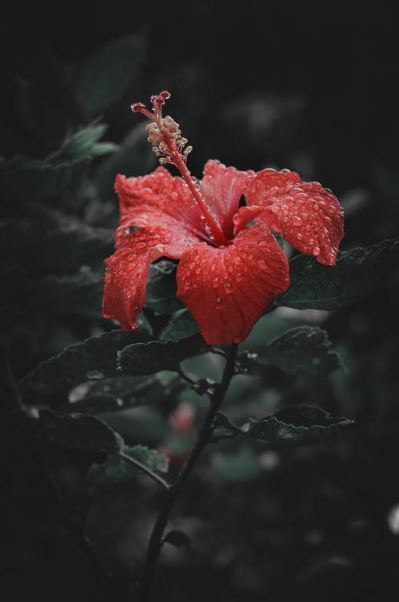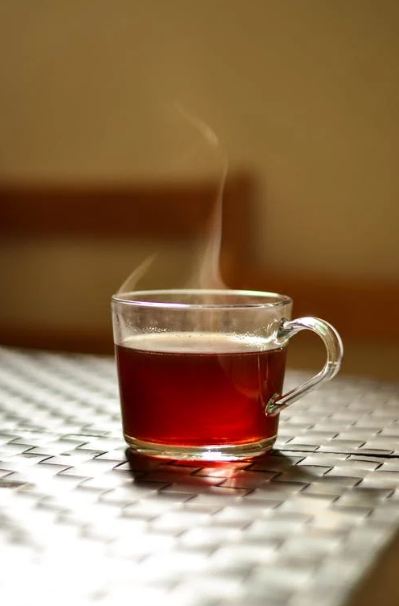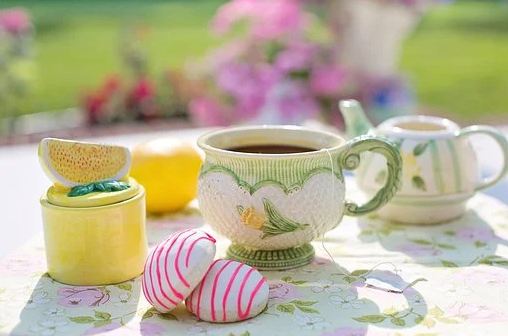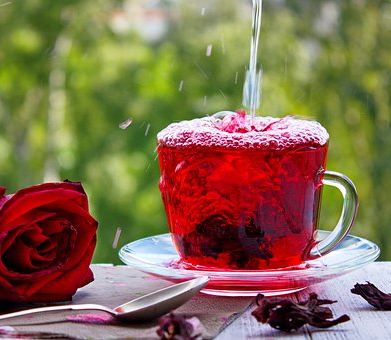When we talk about roselle tea, many people might not be familiar with this particular name. However, roselle is just a type of hibiscus flower. Hibiscus tea is quite popular with tea drinkers around the world for its color, flavor, and health benefits. This tea is made with hibiscus flowers, which are large and somewhat ornate blooms. They flourish in subtropical and tropical climates, though there are several different species. Of these roselle is among the most popular and common edible choices.
The hibiscus is quite pretty when used as decoration, but drinking its tea is another story altogether. While we can probably eat the roselle raw right after plucking it from the main plant, you’d probably enjoy it more in jams, salads, and relishes as well as teas. As mentioned above, there’s a lot more than just enjoyment when you have a cup of hibiscus tea. There are even some cultures that make a habit of drinking such teasto get the medical benefits. Jasmine is another popular option, but let’s focus on the hibiscus offering for now:
1. Controlling Blood Pressure
Certain studies show how consuming more roselle can help in reducing blood pressure levels. The effects could also result in lower levels of bad cholesterol, which means that this tea might support our heart health.
2. Helps to Lower Levels of Blood Fat
Lowering blood pressure will give us a better picture of health, but it’s also important to keep a check on our blood fat levels. Luckily, drinking roselle tea regularly might help with this point as well. We want to keep our blood fat levels in the safe range, or risk contracting heart diseases in the near future.
One study shows how 60 diabetic people were give black tea or hibiscus (roselle) tea. After the course of one month, the people who drank the roselle tea had increased levels of the good kind of cholesterol (HDL). The levels of harmful triglycerides, bad cholesterol, and other undesirable chemicals had also gone down.
One study observed the effects of hibiscus extract on people with metabolic syndrome. The results also show an increase in good cholesterol levels and a downturn in overall cholesterol.
Many studies on the consumption of hibiscus or roselle might be conflicting. However, they seem to be pretty clear on the positive effect of this flower on our blood cholesterol. You can also read up on the unique properties of muntingia, which is a fruit and a flower that contain health benefits as well.
3. Improving Liver Health
Liver health is an increasingly common issue these days, especially in places where the consumption of fast food and processed ingredients is common. Our liver produces healthy protein, secretes bile, and breaks down the fat we eat. If we don’t take care about eating the right things, issues like fatty liver might develop fairly easily.
Fortunately, studies show that consuming items like hibiscus tea could enhance liver health and keep this major organ working efficiently in the long run.
Another study looked at how overweight individuals might be able to improve their liver steatosis by consuming hibiscus more often. This condition occurs when the liver has too much fat and is considered to be in danger of failure. The study demonstrated how consuming hibiscus might improve liver steatosis. There are other studies documenting other types of benefits, but these are mostly based on animals as subjects and not humans.
4. Help in Losing Weight
With all the edible temptations and sedentary pastimes available today, it’s not surprising to hear that someone is struggling with losing weight. However, it’s heartening to know that many studies have suggested how drinking hibiscus tea could be linked to weight loss. Even if the tea doesn’t directly lead to us shedding pounds, it might just keep us from reaching the point of obesity.
One such study looked at 36 participants, all of whom were overweight. Each subject was either handed a placebo or asked to consume some hibiscus extract. It was found that after a dozen weeks or so, the extra had controlled body weight and fat, BMI, and the subjects’ hip to waist ratio.
5. Might Contain Cancer-Preventing Compounds
Everyone dreads hearing the ‘C-word’, so we might want to take certain steps towards preventing cancer. Drinking more roselle tea might be a good idea here, as it has a high level of polyphenols. The latter are compounds which might have the required properties to stave off cancer.
Certain test-tube studies have found some amazing results about how hibiscus might affect cancer cells.
Test-tube studies have found impressive results regarding the potential effect of hibiscus extract on cancer cells. In one such study it was observed how hibiscus extant can pause the growth of a cell, which is what we need to accomplish for cancer cells.
Other studies have reported similar findings, with one showing how hibiscus leaf extract limits the spread of stomach cancer. This phenomenon might have occurred due to the polyphenols inside roselle or hibiscus. Polyphenols are known for their cancer-fighting properties.
6. Easy to Prepare
Apart from all the potential health benefits, there’s also the fact that hibiscus tea is just so easy to make. You don’t require any special equipment or experience to make the perfect cup. Dried hibiscus flowers are available at many supermarkets, and you can even purchase some online if you want a more convenient option.
All you have to do is put some of these dried flowers in a teapot–you’ll have to eyeball the amounts of water and dried flowers to get the right strength. Pour boiling hot water on the flower and then cover the teapot. Let the whole thing step for a few minutes, and then strain the mixture. You can then sip on the liquid as it is or after putting some honey into it for sweetness.
7. A Unique Taste
Finally, one can simply enjoy a cup of roselle tea if they like the flavor or just need a change from their routine. The color of this tea is usually bright red, though it may vary according to the kind of flower used. While it’s possible to brew the tea leaves (which are flower petals in this case) and serve roselle hot, pouring the mixture over some ice will probably be better for consuming during the summer.
The hibiscus tea is usually bright red in color, but the exact shade may vary according to the shade of the flowers at the time of picking. The flavor is sour and tart, which could serve to perk you up at the end of a long day. If you’d prefer a sweeter flavor, perhaps the banana flower might be a better option.
Conclusion
While the various health benefits of consuming roselle tea might be many and varied, the fact remains that most of the studies in this field are based on test-tube research. It’s probably better if we wait for a positive result from extended research on human subjects. Until then, we might want to drink up our hibiscus tea and hope it works for our benefit in the near future.

